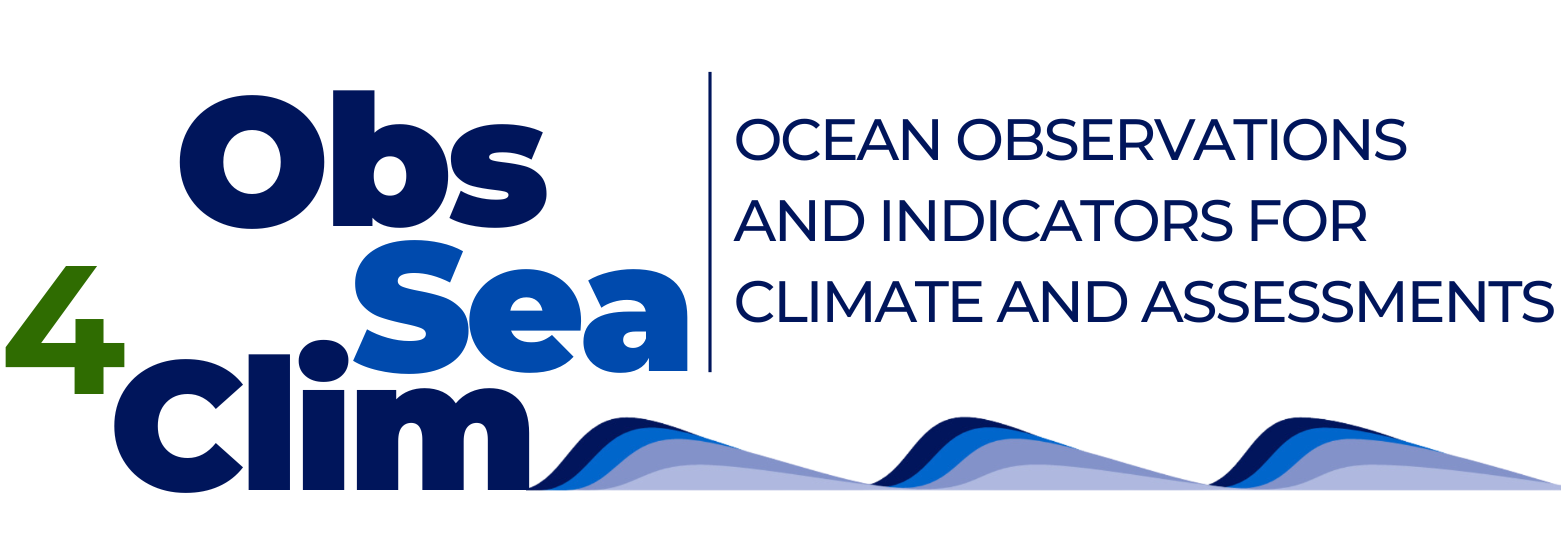In ObsSea4Clim we engage with several scientific and technical concepts. To make it easy to understand and follow our work, key definitions are presented on this page. The definitions are gathered from international organizations and agencies that work with climate and ocean observations, and the source is provided at the end of each section.
Essential Variables
Essential variables (EV) are variables known to be critical for observing and monitoring a given facet of the Earth system. Many professional organizations—the World Meteorological Organization, the United Nations Environment Program, the International Science Council, and the Group on Earth Observations, to name a few—have sponsored the collaboration of institutions across the world to identify essential variables in their respective fields of study. These include oceanography, climatology, biodiversity studies, and geodiversity. Having a common set of accurate and sustained measurements with standards for data collection and dissemination ensures the usability of data across multiple platforms and agencies.
Consistent measurements of EVs, as identified by subject matter experts, need to be maintained over time to accurately serve as a means to monitor and assess change to Earth systems, including the atmosphere, biosphere, land, and ocean. Expert panels, consisting of scientific and technical individuals from academia, international space agencies (like NASA and the European Space Agency), government organizations, and non-governmental organizations review the requirements for EV observations, including temporal frequency and spatial resolution, and then match these requirements to the capabilities of existing instruments (from moorings to satellites).
(Source: Earthdata, NASA)
Essential Climate Variables
An Essential Climate Variable (ECV) is a physical, chemical or biological variable or a group of linked variables that critically contributes to the characterization of Earth’ s climate. The Global Climate Observing System (GCOS) has identified a set of 55 ECVs within three categories: atmosphere, land, and ocean variables.
- Atmosphere ECVs cover both surface and upper-air atmosphere, and atmospheric composition.
- Land ECVs cover the hydrosphere, cryosphere, biosphere, and anthroposphere.
- Ocean ECVs cover physical, biogeochemical, and biological/ecosystems disciplines.
ECV datasets provide the empirical evidence needed to understand and predict the evolution of climate, to guide mitigation and adaptation measures, to assess risks and enable attribution of climate events to underlying causes, and to underpin climate services. They are required to support the work of the United Nations Framework Convention on Climate Change (UNFCCC) and the Intergovernmental Panel on Climate Change (IPCC).
In order to fully understand Earth’s integrated system and the interactions therein, among various elements that affect climate, the ECVs are accompanied by descriptions of the measurement requirements for spatial and time scales. ECVs are periodically reviewed and updated; these updates ensure that newly feasible variables (ones that technology has now made practical) are added as appropriate.
(Sources: Earthdata, NASA; Global Climate Observing System)

Essential Ocean Variables
To be able to deliver ocean forecasts and early warnings, climate projections and assessments, and protect ocean health and its benefits, it is vital to measure Essential Ocean Variables (EOVs). EOVs help interpret the connection between the ocean and elements such as the atmosphere, biosphere, hydrosphere, cryosphere, and anthroposphere.
Because EOVs are perennial, they allow the observing system to change and develop around them as technology and capability evolve. Focusing on EOVs enables ocean observations that cut across different observing platforms and offer the best, most cost effective plan for providing an optimal global view for each EOV.
The Global Ocean Observing System (GOOS) Expert Panels identify the EOVs to use based on:
- Impact: the variable addresses climate, operational ocean services and ocean health, and also contributes to understanding from a scientific perspective or application from a service perspective.
- Feasibility: it is technically, politically and economically feasible to observe or derive the variable on a global scale using proven, scientifically understood methods.
When EOVs are identified, the GOOS Expert Panels create and share a series of recommendations. These include what measurements are made, observing options and data management guidelines. (Source: Global Ocean Observing System)
The Rolling Review of Requirements
The Rolling Review of Requirements (RRR) aims to provide a systematic and transparent process to support the high-level design and evolution of the World Meteorological Organisation’s (WMO) Integrated Global Observing System (WIGOS) aligned with its Vision in 2040.
The RRR process compiles information about requirements for observations, about observing system capabilities, their cost-effectiveness, and draws on experts and impact studies to provide guidance on the most important priorities for addressing the gaps between requirements and capabilities, with consideration of WMO priorities.
User requirements forobserving geophysical variables in support of the activities across the WMO Application Areas are collated in a comprehensive, systematic, technology free, and quantitative way in the WMO Observing Systems Capability Analysis and Review (OSCAR) / Requirements database.
The RRR is defined by the Manual on the WMO Integrated Global Observing System (WMO-No. 1160, section 2.2.4 and Appendix 2.3).
(Source: World Meteorological Organisation)
